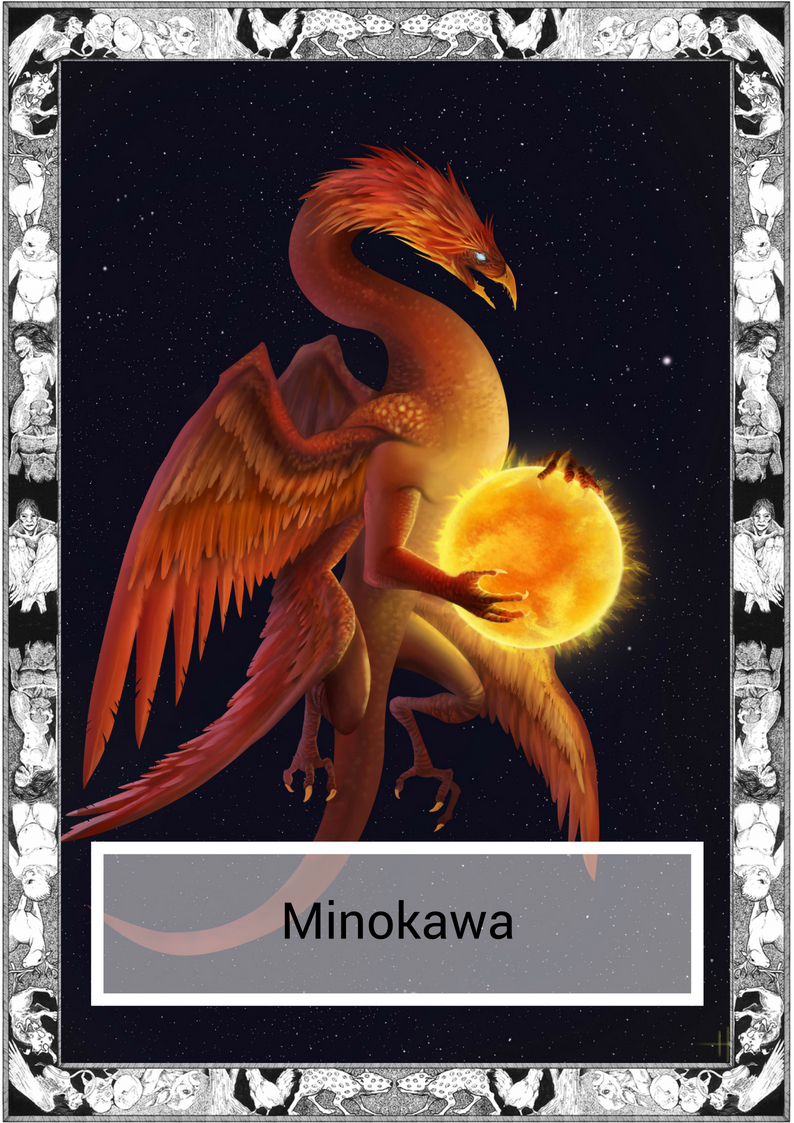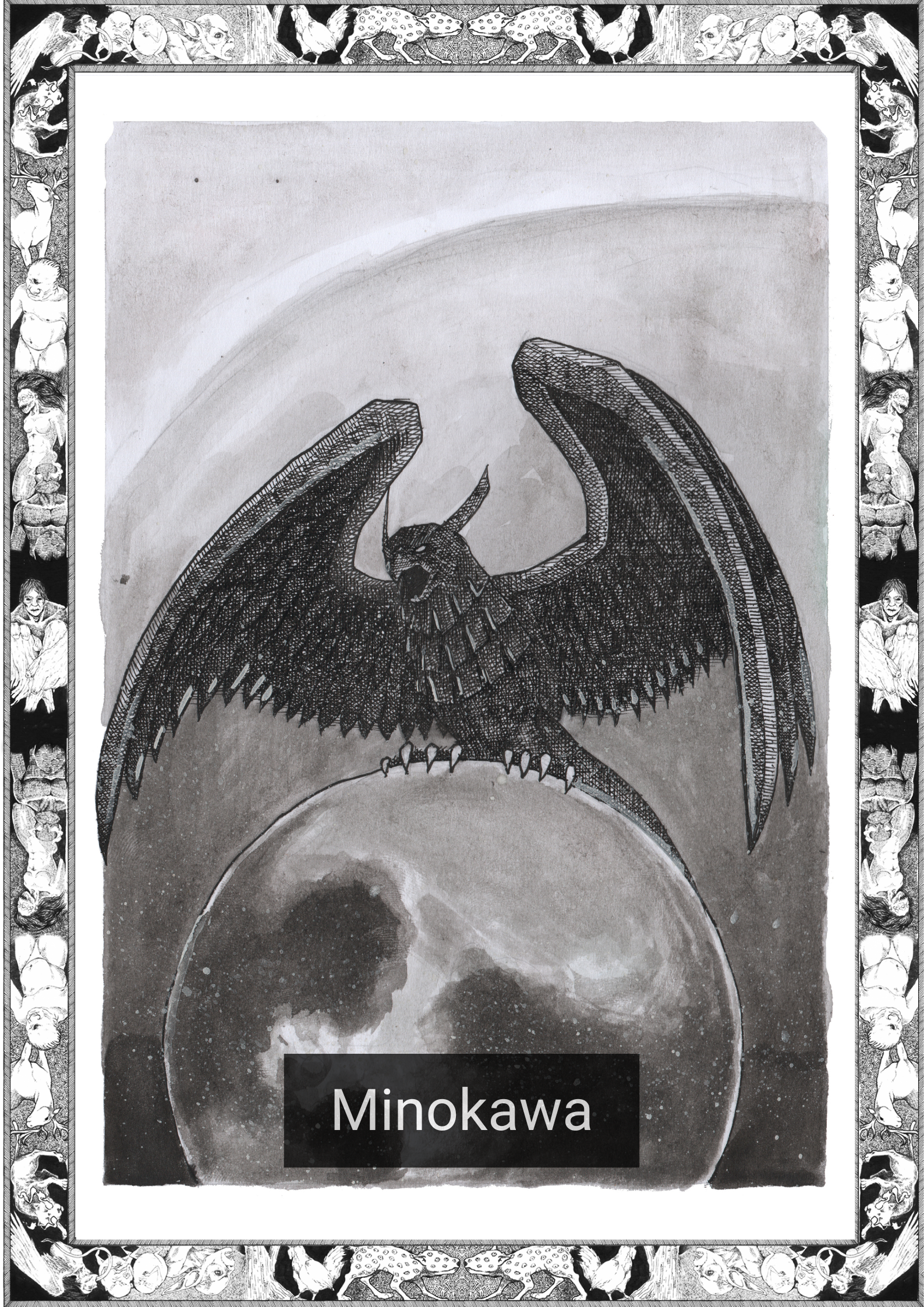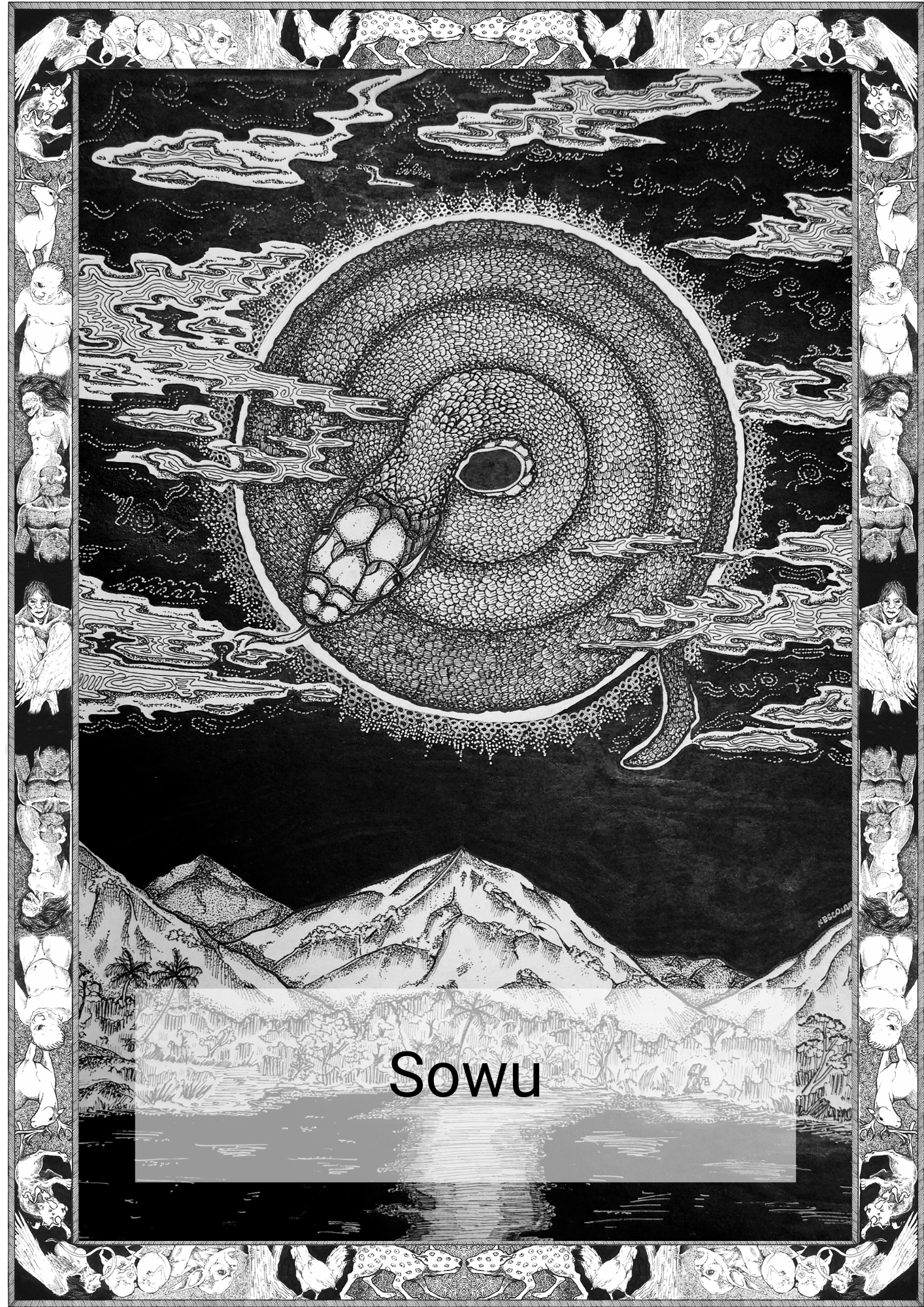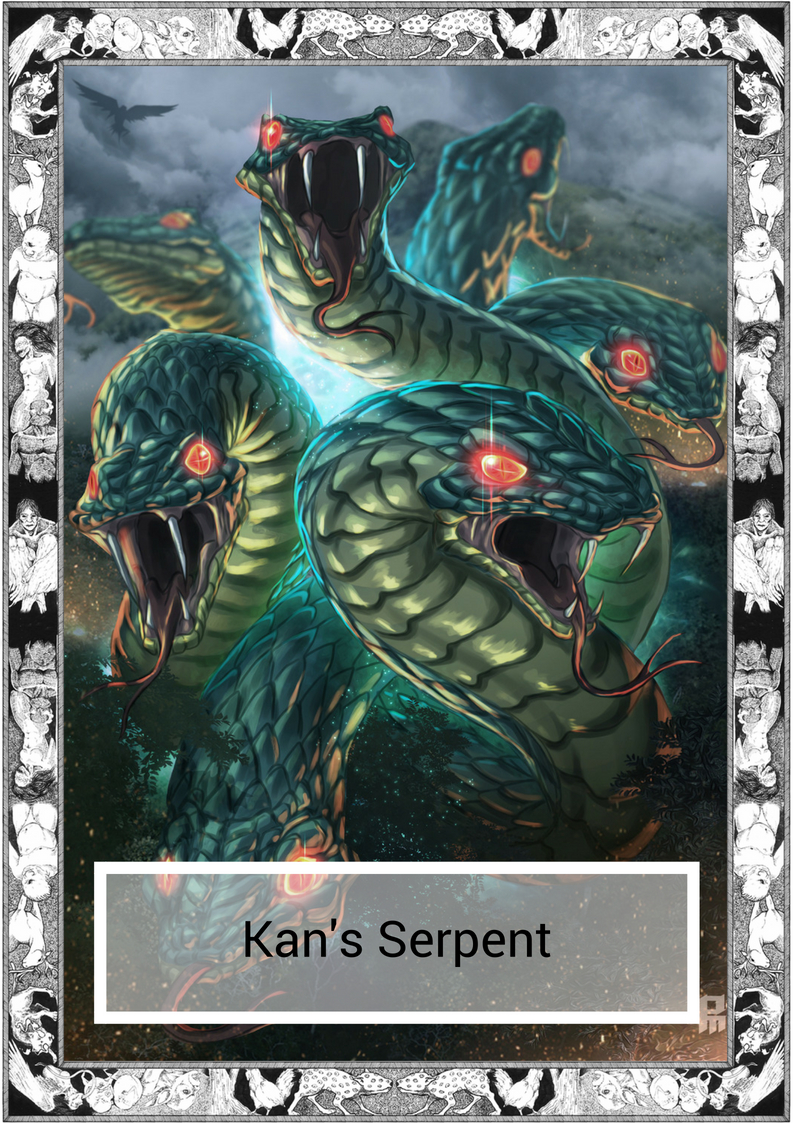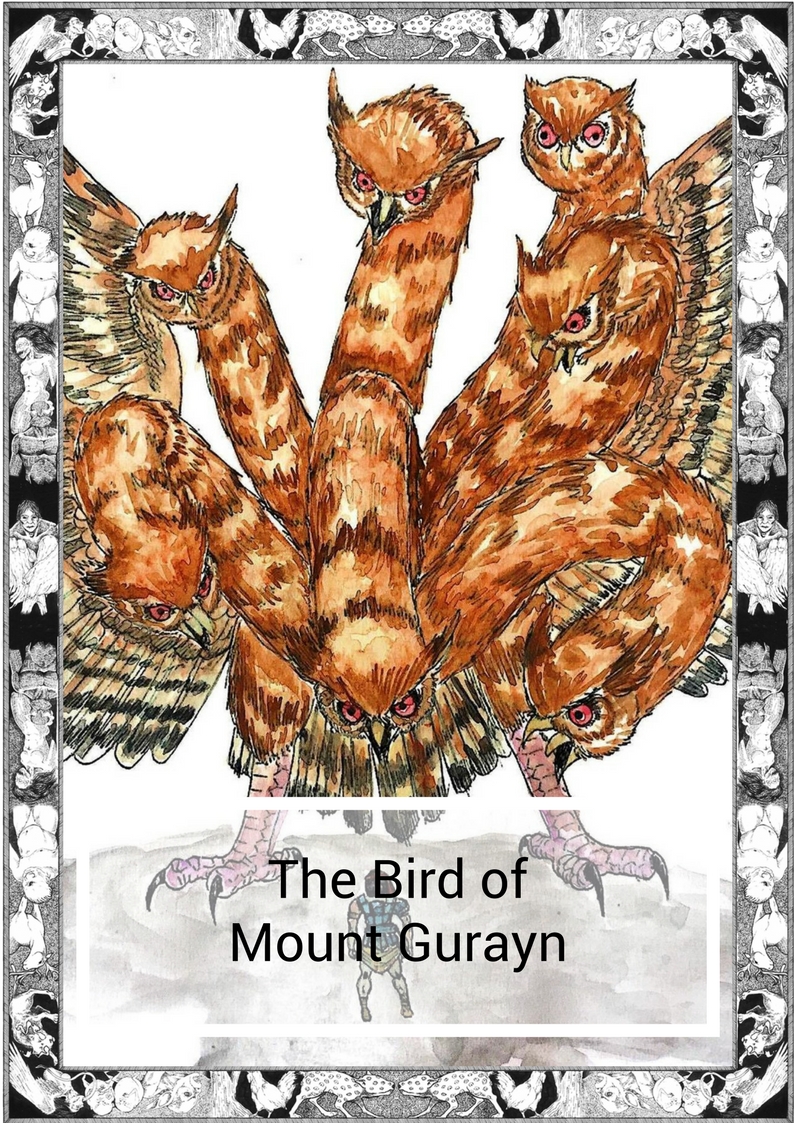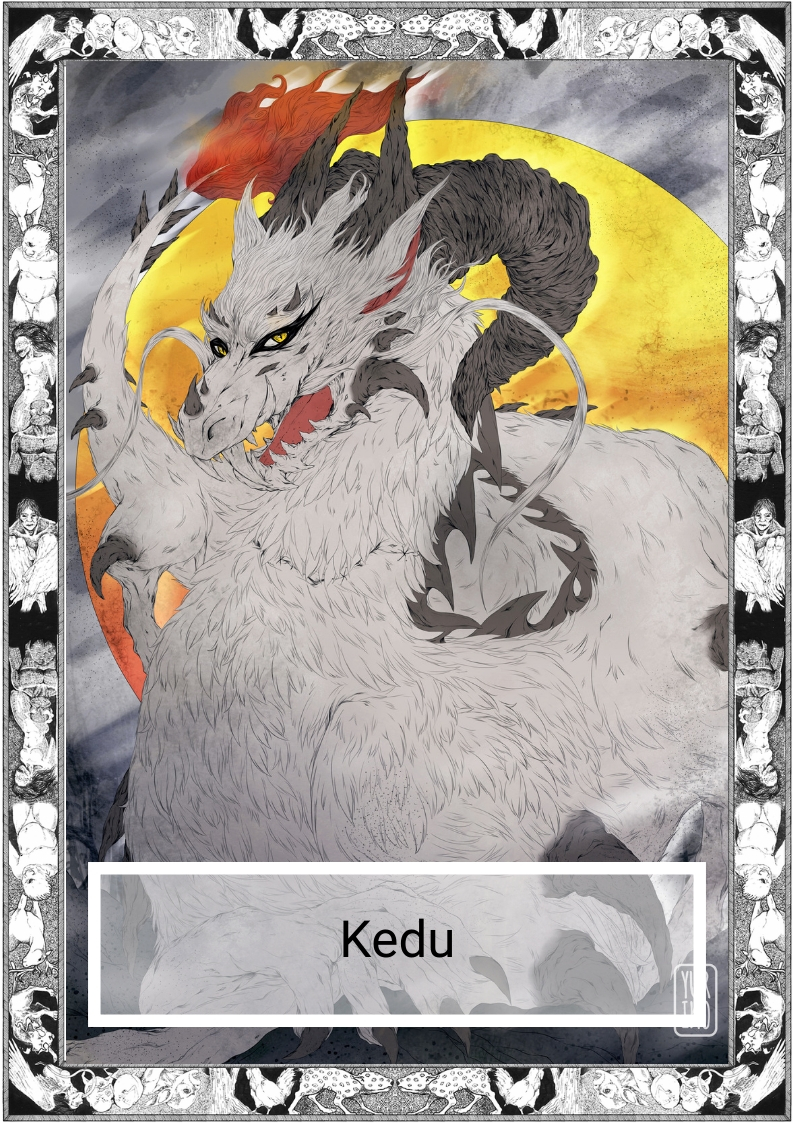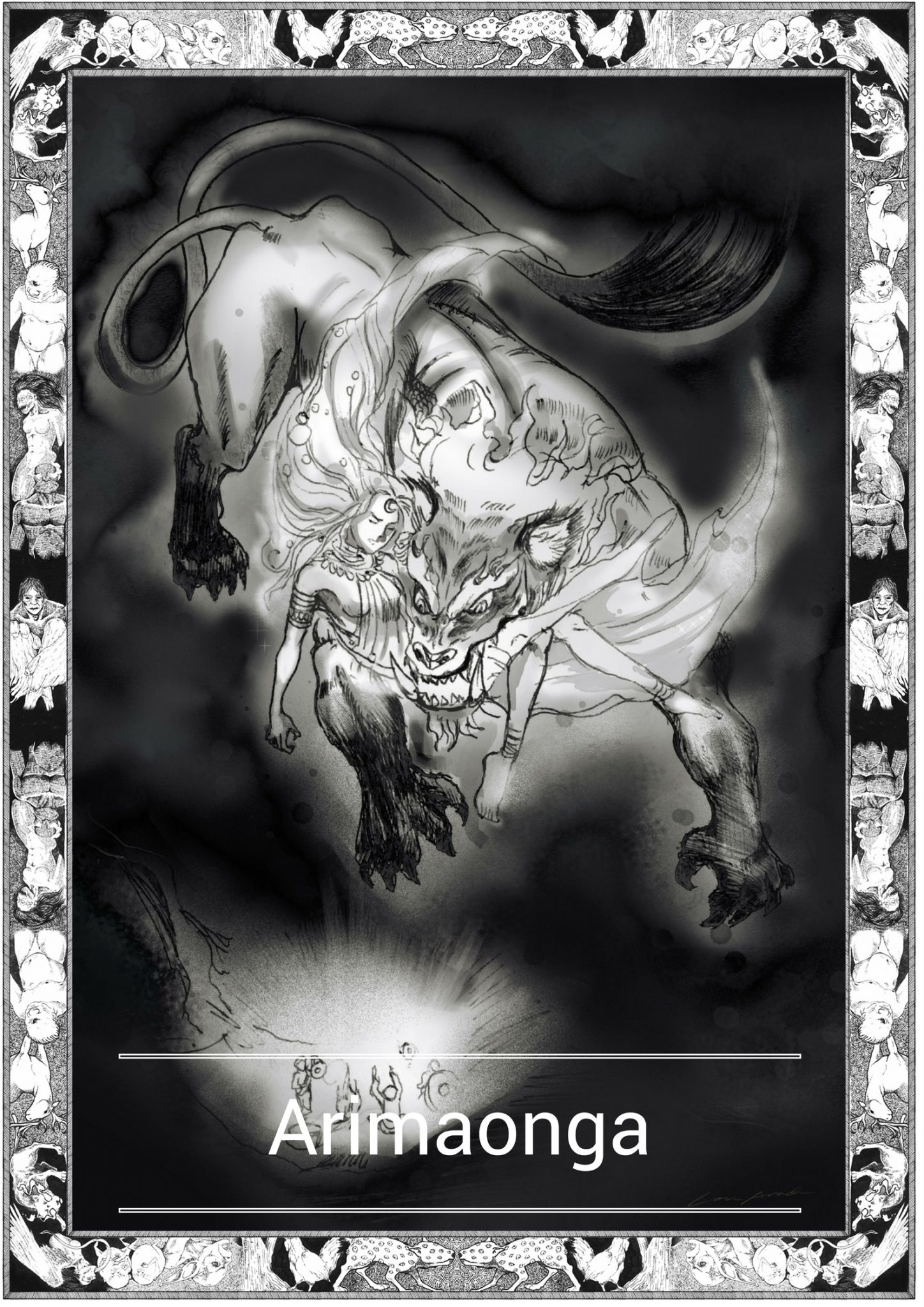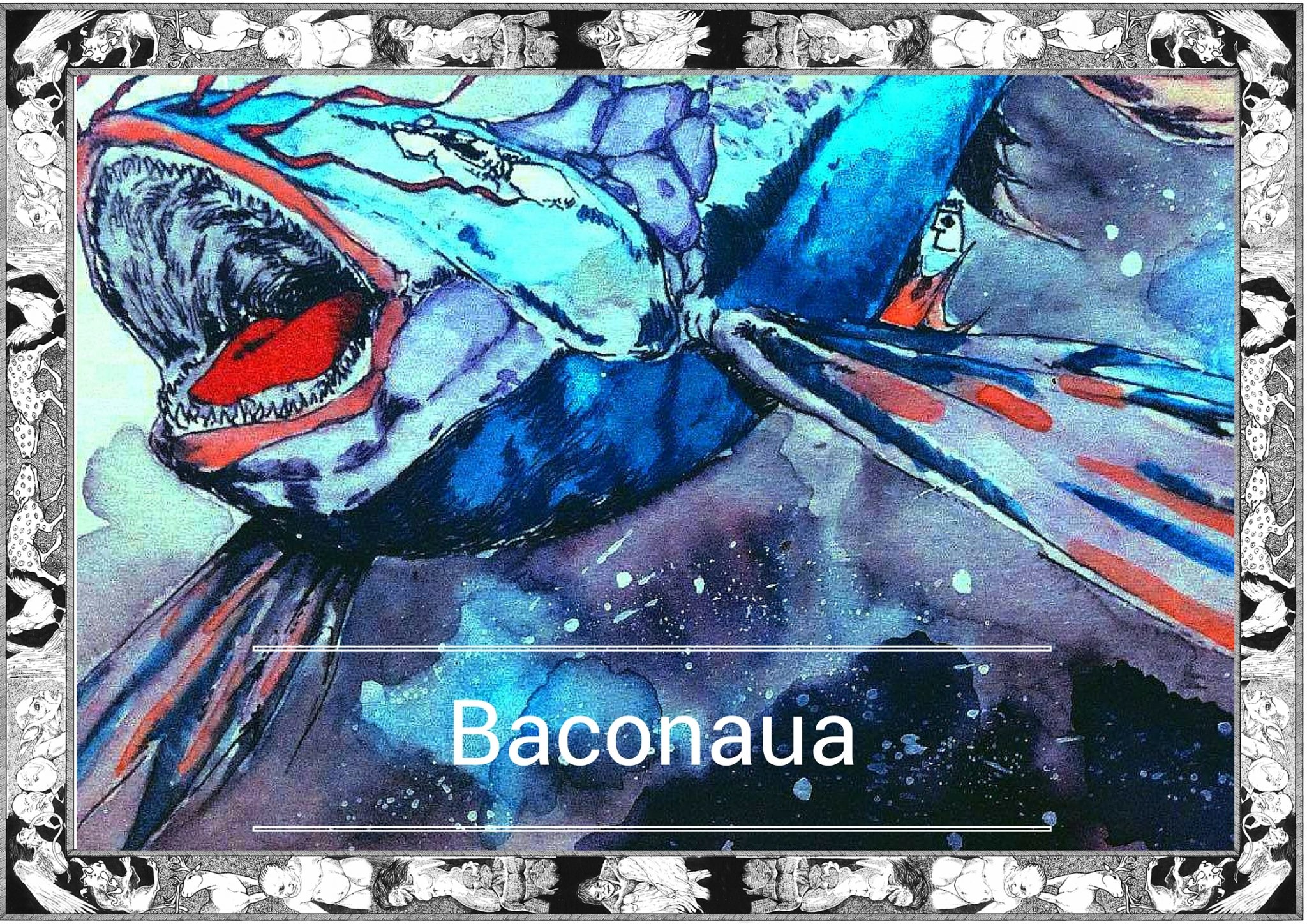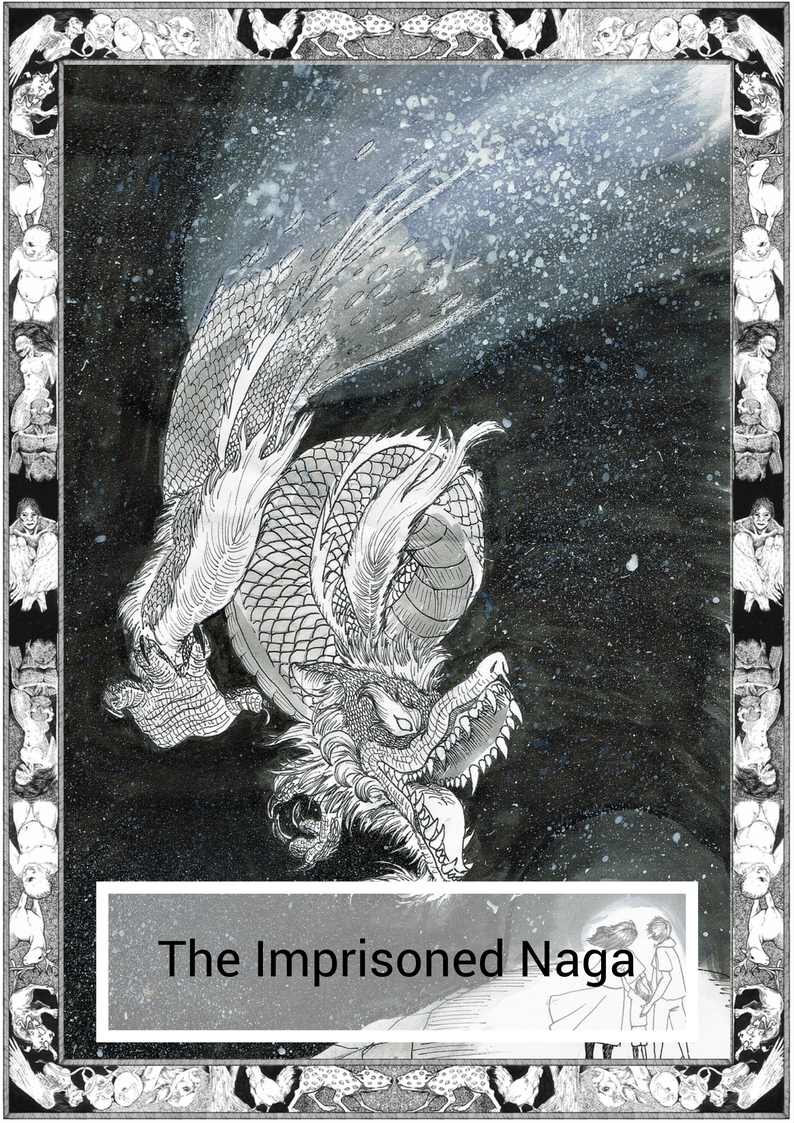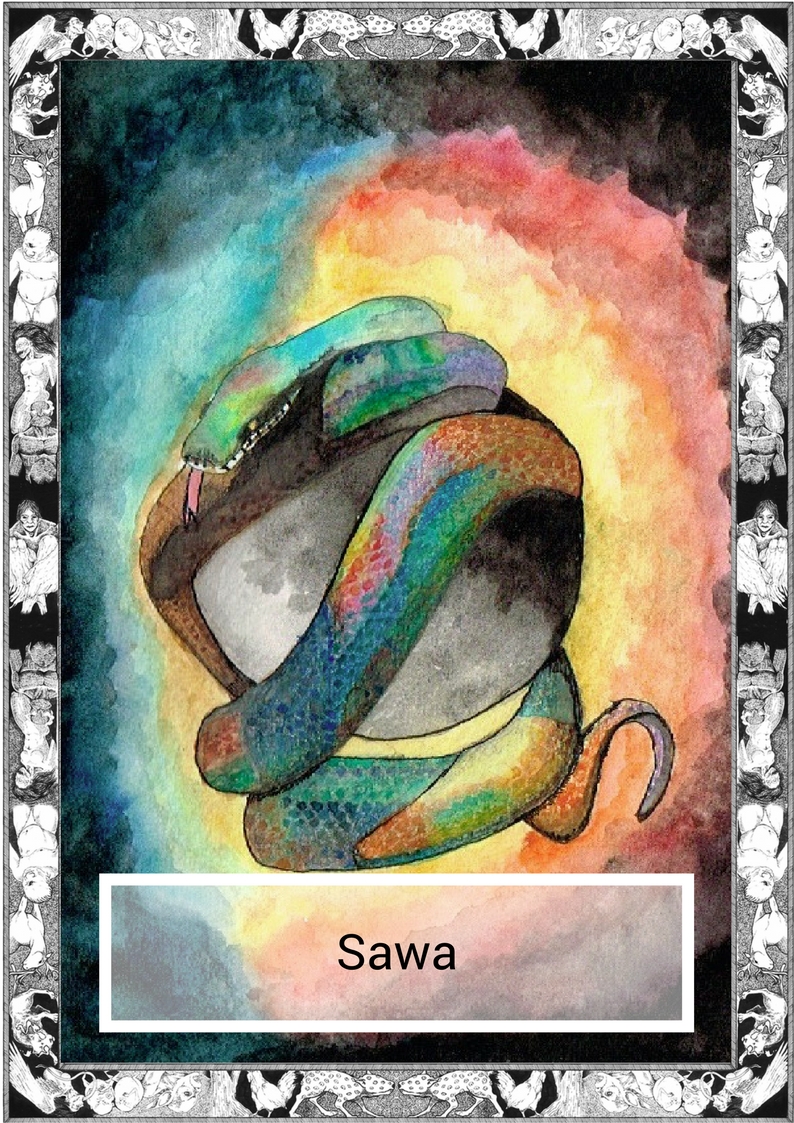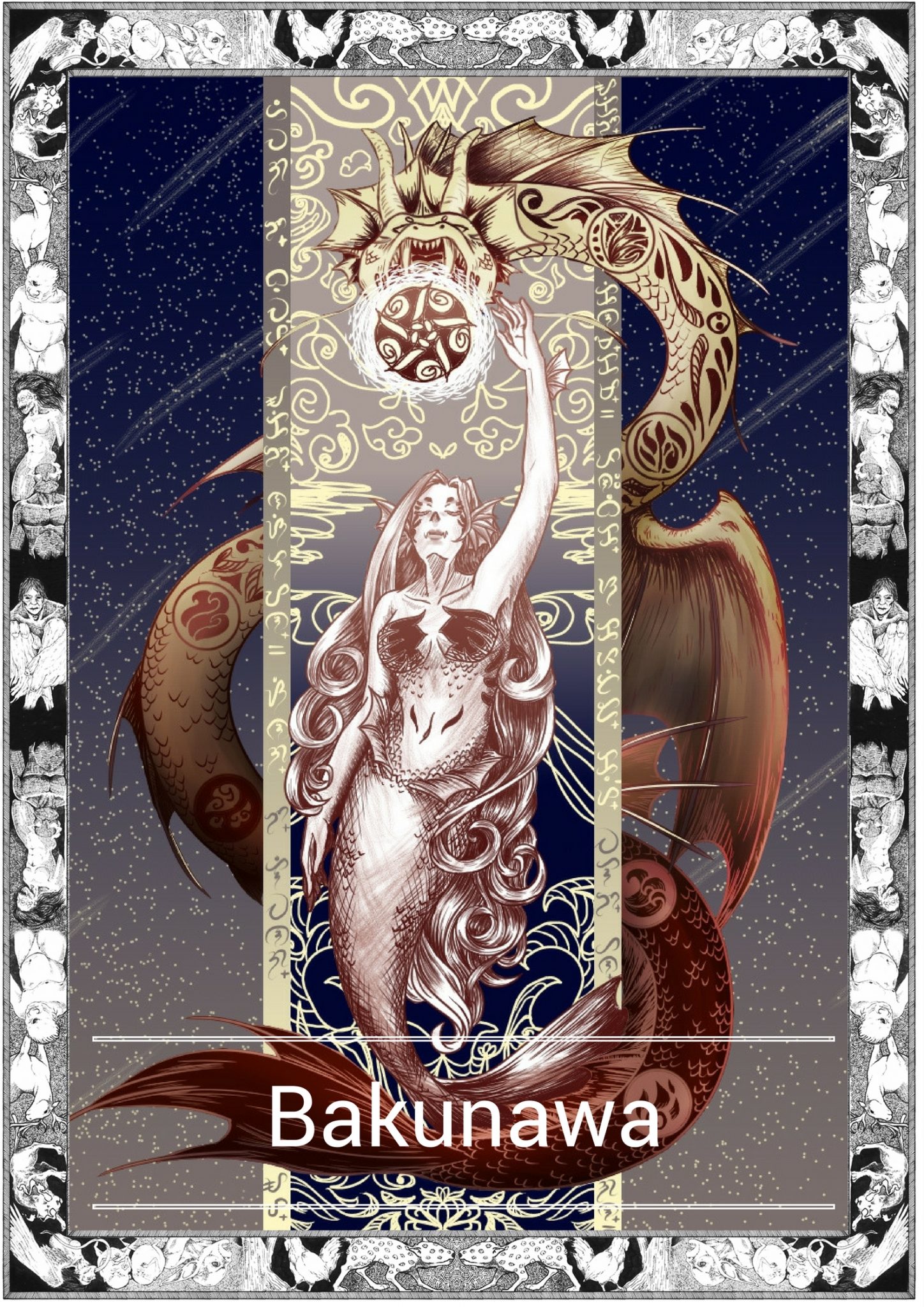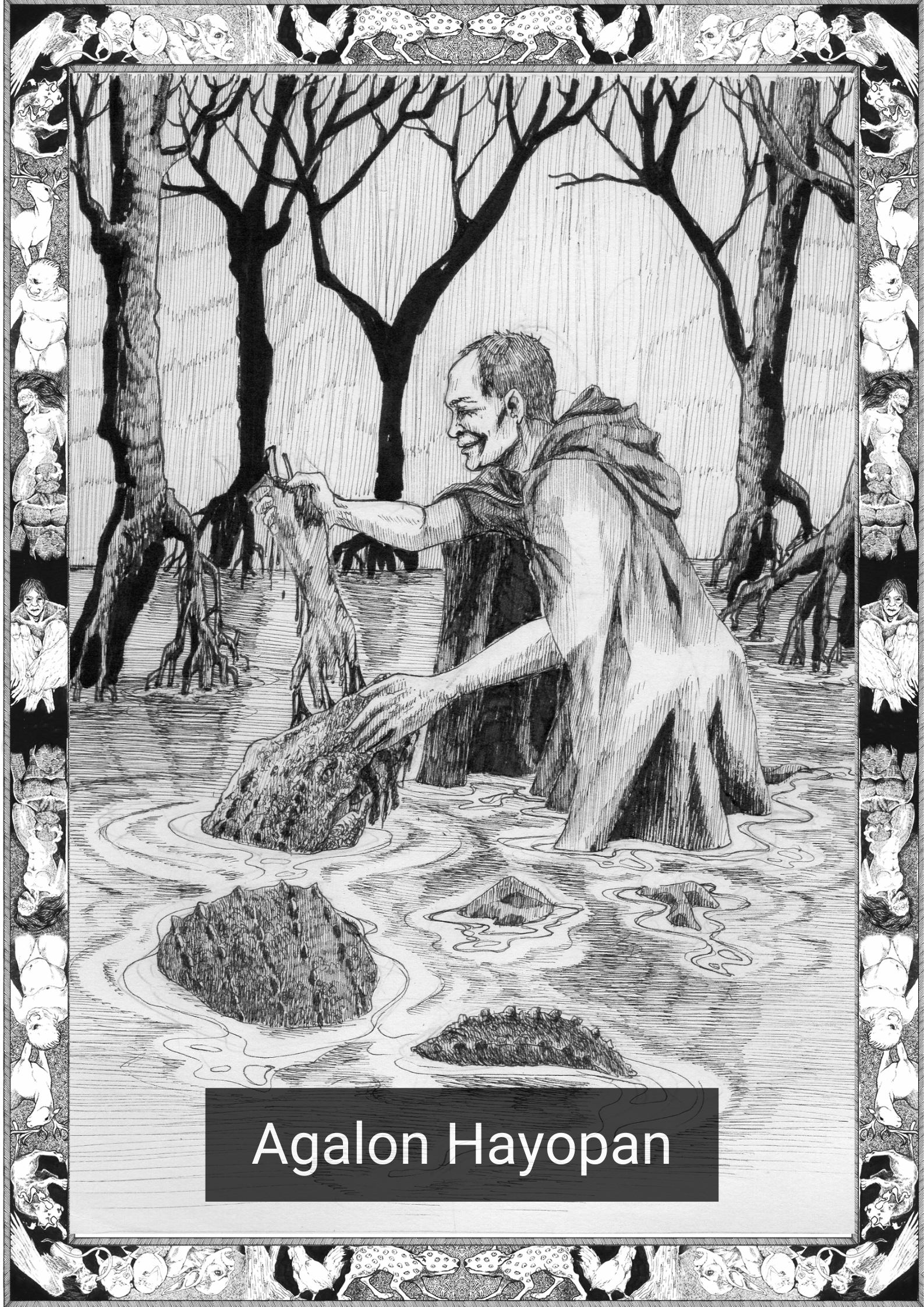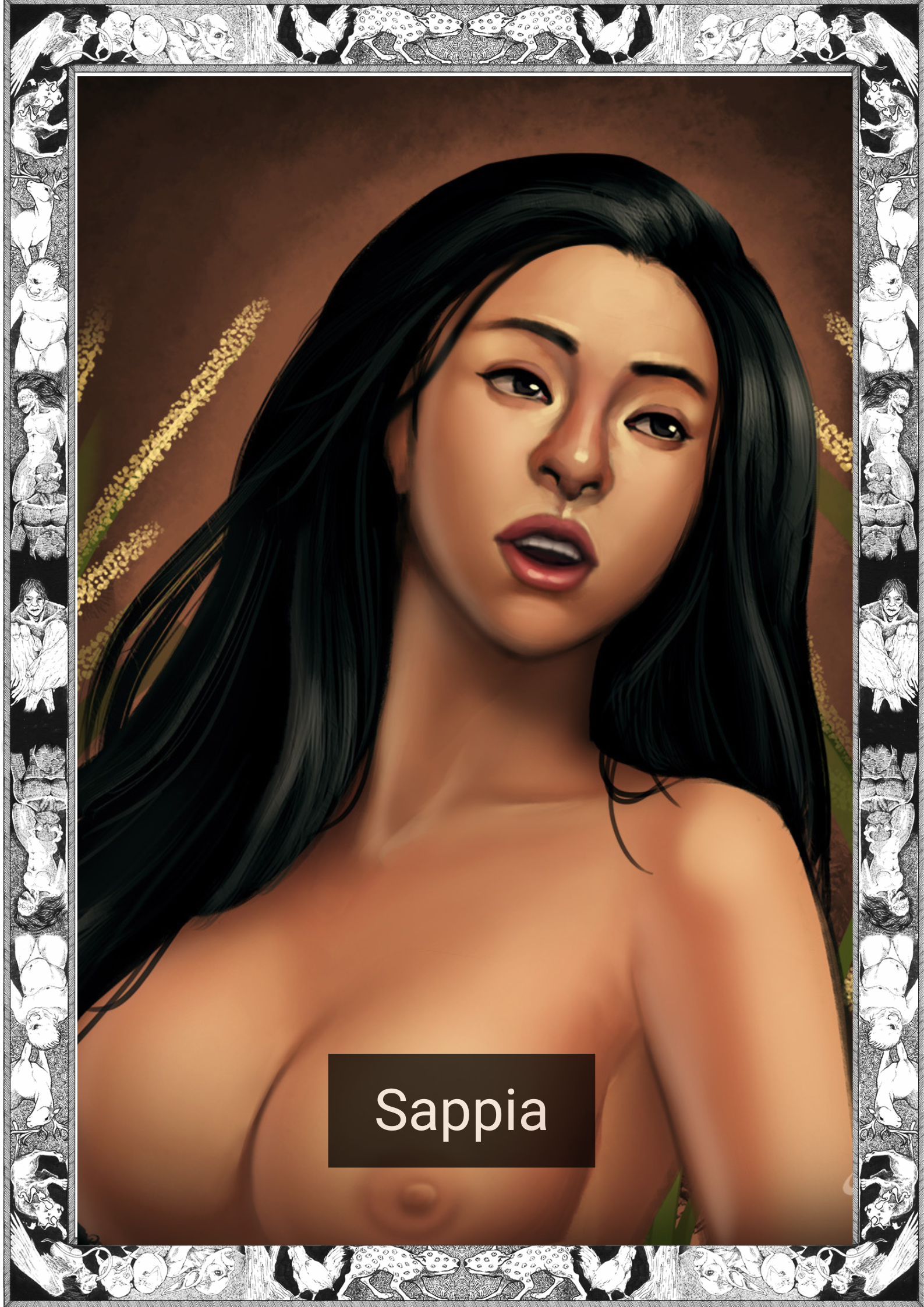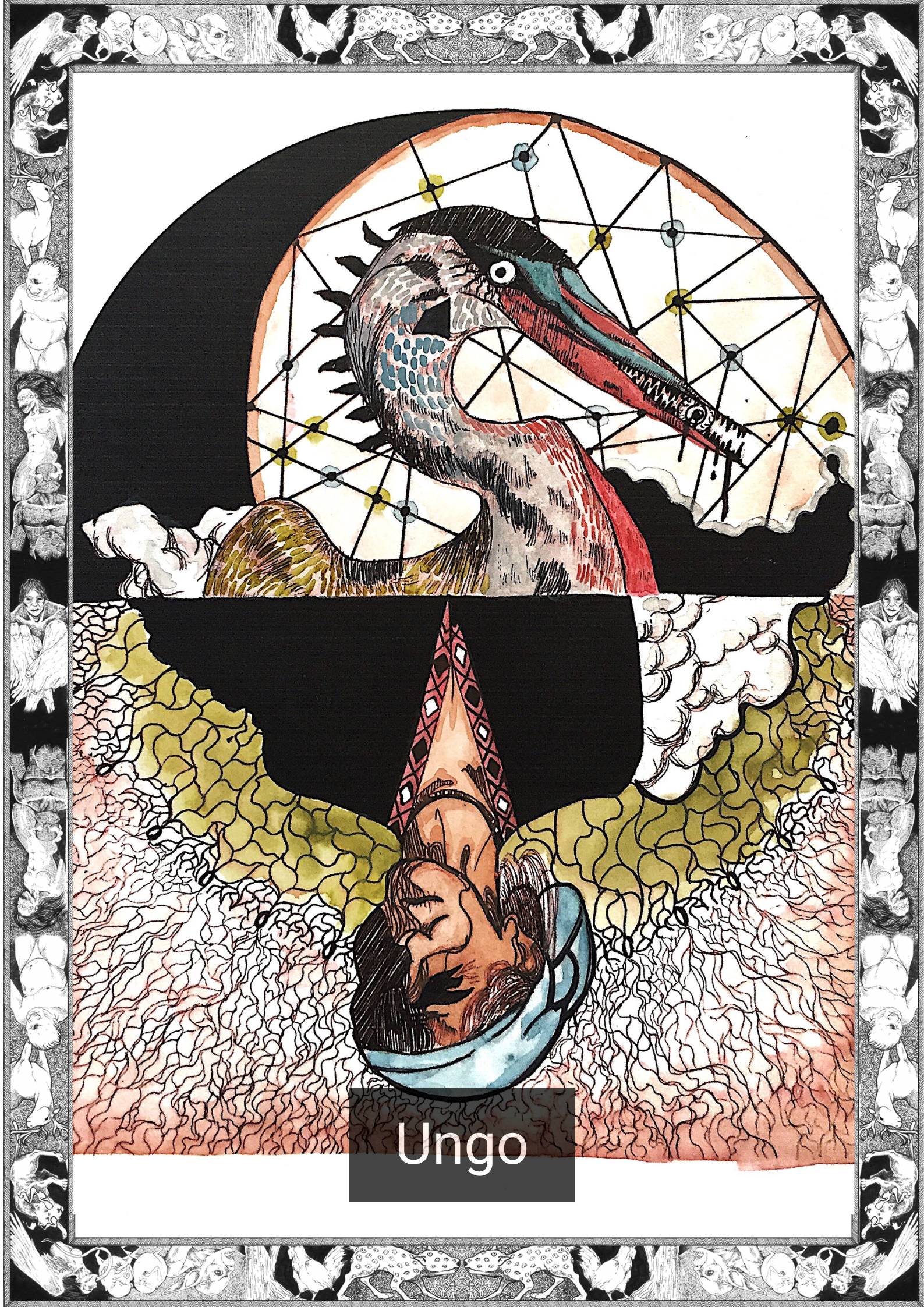
*Note this story is in Waray
Tinmutok ako ha iya makaharadlok nga mga mata
Ngan nangurog
Sayop ada ini
Lugaring urhi na
Urhi-urhian na hin duro
“Kay ano ka aanhi?” ginhiram niya an iya kutsilyo
Ginlanat ko an akon ginhawa katima,
Sinmandig ako han kamatuoran
“Sumati ako Apoy, paunan-o matatapos an kalibutan?”
“Damo an baton hito nga pakiana, idoy,
Sugad kadamo han mga bituon ha kalangitan.”
Ginpakurog han iya halaba nga ngirit an akon kaunoran
Gin-ukab han iya mga mata an akon kalag.
“Karaotan la an dara han baton hito ngada ha imo.”
“Oo,” baton ko “Lugaring kinahanglan ko mahibaro.”
“Ada, hala,” nga laong niya
Tinmukdaw hiya ngan ginmawas han kwarto
Nag-ininaw-inaw la anay ako palibot
Han makangingirhat nga mga butang
Nga nagsasasrang ha iya payag;
Mga tudlo ngan mga bungo ngan dirudilain la
Nga mga parte han lawas hin damo nga mga binuhat
Nga waray ko na isipa pa
Linmingkod ako ngan ak’ gintutukan an kutsilyo nga biniyaan
Nga ha akon ino-ino, kun ibabaligya ini,
Mamahal an balor ha merkado
Pananglitan paraon la an pula hini nga mga dum-it.
Binmalik an babayi
Nga may dara nga us’ ka makaong nga tubig
Ngan naglalaga nga bato
“Kay ano mo karuyag mahibaro?”
Pakiana niya
“Diri na importante,” baton ko
“Balitaw?
Ano nga mga sekreto an imo tinatago?”
“Sige na gad, Apoy, batona an akon pakiana.”
Ginkuha niya an iya kutsilyo
Ngan ginhiwa niya an iya palad,
Iya ginpaturo an dugo didto han tubig
An naglalaga nga bato iya ginpaligid
Ngan an duason-asul hini nga lamrag
Nagbitad hin mga lambong ha bug-os nga kwarto
“Nakikit-an ko na,” nga laong niya
Human hin haros waray kataposan nga kahilom
“Ano an imo nakikit-an Apoy?”
“May ada ko nakikita nga dadako nga kalawas,
Dadako pa hin bis’ ano nga puro.
May ada ko nakikit-an nga mga barahibo
Hinimo hin mga espada
Ngan an puthaw hini nga mga kulo
Nakikit-an ko an akon kalugaringon
Dida han iya mga mata”
Nagtikalamrag an asul nga laga
Nga nagbak-ad pa hin duroy kamakarimadima
Nga mga lambong ha amon palibot
“Ano an may ada, Apoy?”
“Tikang ini ha iya yungib nga binabantayan hin asul nga aso
Ngan naghuhulat ini
Didto ha kasidsiran ha sinirangan.”
Nahimo nga itom an tubig dida han makaong
Nakit-an ko an tubig nga mabangis an pagtabsik
“Nakikit-an ko an katapusan han mga adlaw,”
Lain na an iya tingog
Daw gurang na hin duro
Daw kasisidman
“Aw, karuyag ngay-an hito nga diyo nga tawo
Mahibaro paunan-o matatapos an nga tanan?”
Nga laong han iya bag-o nga tingog
“Oo Apoy, kinahanglan ko mahibaro.”
“Kun asya man, kitaa!”
Tinmudlok hiya ha tubig
Matin-aw na ini
Ngan nakit-an ko an akon kahimo
Lugaring diri, diri la an akon kahimo
Nakit-an ko an iya nakit-an
Nakit-an ko an adlaw ngan an bulan
Ngan ginlalam-oy han kasisidman
Nakit-an ko an kagutom
Nga diri ug diri matatagbaw
Nagtinuok ako
Pakahibaro ko nga an kalibutan
Diri magkakaada hin paglaom
Dida hiton kataposan
Naghalo an akon mga luha ngan an tubig
Ngan binmalik an kaitom
“Diri gad ito mahihimo nga sugad iton katapusan,” siring ko
“Siring ko pa ha imo nga karaotan la
An dara ha imo han baton.”
Naliwat na an iya tingog
Yana, puno na ini hin kaluoy
“Ginbaton ko na an imo pakiana idoy,
Yana batona ako.
Kay ano nga karuyag mo mahibaro?”
Nagtapo an amon mga siplat
Ngan kamatuoran la an akon nayakan
“Karuyag ko mahibaro
Kun san-o ko ngahaw hiya makikit-an”
“Hin-o?” Pakiana han babayi
“An akon hinigugma, an akon kinabuhi,”
Akon baton
“Ginsidngan man gud ako hin usa
Nga parupareho ha imo
Nga makikit-an ko hiya
Dida hiton katapusan hit kalibutan
Asya nga maghuhulat ako
Hasta umulpot an higayon
Nga makikit-an ko ngahaw hiya”
“Lurong ka!”
Tinmigbas an iya mga pulong ha akon kalag
“Natatapos an mga kalibutan kada adlaw
Sigurado ka ba nga an imo ginbibiling
Diri an imo kalugaringon nga katapusan?”
“Diri ako maaram, Apoy.”
Nagtinuok na liwat ako
Ngan an akon mga luha nahulog didto han tubig
Nakit-an ko na an katapusan nga mas matin-aw
Kun paunan-o han tusak hini gindakop an bulan ngan adlaw
Kun paunan-o ini ka waray panginlabot han kinabuhi han tawo
Ginpasalamatan ko an lagas nga babayi ngan linmakat ako
Samtang hiya nag-iino-ino
Lugaring waray pa ako makakaulpot ha may ganghaan
Sinmiring hiya
“Ayaw lanata an katapusan, idoy.
Kasubo la an may ada hito nga aragian.”
“Maaram ako, Apoy.”
Waray na hiya iba pa nga ginbungat
Dida han akon paglakat
Ngan ginputos ko an akon kabido
Ha akon kabug-osan
Ngan naghinumdom
Han mga barahibo
Han ginsalaming nga mga mata
Han malinguon nga mga kulo
Ngan hinmiyom
Kay nakit-an ko an katapusan
Ngan dida han katapusan
Nakit-an ko hiya
=———————————————————=
English Version
She sat before me, wrapped in grey smoke.
Her red painted lips pursing into a small smile
A knife was set on the table before us
I stared in her cold eyes and shuddered
Maybe this was a mistake
But it was too late now
Far, too late
“Why are you here?” she fondled the knife
I caught my breath and leaned on the truth
“Tell me, lola, how will the world end?”
“That question has many answers, iho,
As many as there are stars in the sky.”
Her wide smile tensed my muscles
Her eyes dug into my soul
“The answer will only bring ruin.”
“Yes,” I replied “but still I must know.”
“Very well then,” she said
She stood up and left the room
And I took a moment to look around
The grotesque trophies littered her hovel
Fingers and skulls and parts of other creatures
I dare not imagine
I sat down and stared at the knife left behind
It would have fetched a fair price in any market
If the red stains were removed
The woman came back
With a bowl of water
And a glowing stone
“Why do you want to know?”
She asked
“It is not important,” I replied
“Oh, isn’t it?
What secrets do you keep from yourself?”
“Please lola, answer my question.”
She took the knife
And cut her hand
Letting drops of blood trickle into the water
The glowing stone was set to the side
And its pale blue light cast shadows around the room
“I can see it,” she said after an eternity of silence
“What do you see lola?”
“I see its giant frame, larger than any island.
I see its feathers made of swords
And its iron claws
I see myself in its eyes”
The blue glow was brighter now
Casting even more violent shadows around us
“What is it, lola?”
“It comes from its cave guarded by blue smoke
And lies in wait
In the eastern horizon.”
The water in the bowl turned black
I could see the liquid splash violently
“I see the end of days,”
She spoke with a different voice now
Something old
Something dark
“So the little human wishes to know
How it will all end?” She said in her new voice
“Yes lola, I need to know.”
“Then look!”
She pointed to the water
The liquid was clear now
And I could see my reflection
But no, not just my reflection
I saw what she saw
I saw the sun and the moon
Consumed by darkness
I saw the hunger
That would never be satisfied
I cried then
To know that the world
Would know no hope
Not in the end
My tears mixed with the water
And it the blackness returned
“It can’t end that way,” I said
“I told you the answer would only bring your ruin.”
Her voice changed again
Now filled with pity
“I answered your question iho,
Now answer mine.
Why do you want to know?”
Our eyes met
And I could only say the truth
“I want to know when I
Will see her again”
“Who?” The woman asked
“My love, my life,” I replied
I was told by one like you
That I will see her
When the world ends
So I wait
Until that moment
When I can see her
“Fool that you are!”
Her words cut into my soul
“Worlds end every day
Are you sure it is not your end that you seek?”
“I do not know, lola.”
I started to cry again
And my tears dropped into the water
I could see the end more clearly now
How its beak ensnared the sun and moon
How it cared so little for the lives of man
I thanked the old woman and left her
To her thoughts
But before I reached the door
She said
“Do not chase the end, iho.
There is only sorrow in that path.”
“I know, lola.”
She said nothing else as I left
And I wrapped my sorrow
Around me
And remember
The feathers
The mirrored eyes
The treacherous claws
And smile
For I saw the end
And in the end
I saw her
=————————————————–=
*Waray is the fifth-most-spoken native regional language of the Philippines, native to Eastern Visayas. It is the native language of the Waray people and second language of the Abaknon people of Capul, Northern Samar and some Cebuano-speaking peoples of eastern and southern parts of Leyte island. It is the third most spoken language among the Visayan languages, only behind Hiligaynon and Cebuano.
Written by Karl Gaverza
Waray translation by Hiyom Labon Buhi
Copyright © Karl Gaverza
Translation Copyright © Hiyom Labon Buhi
Illustration by Harv Heinrich
FB: Harvibore
Inspired by the Minokawa description in Creatures of Philippine Lower Mythology. Ramos. 1971.
